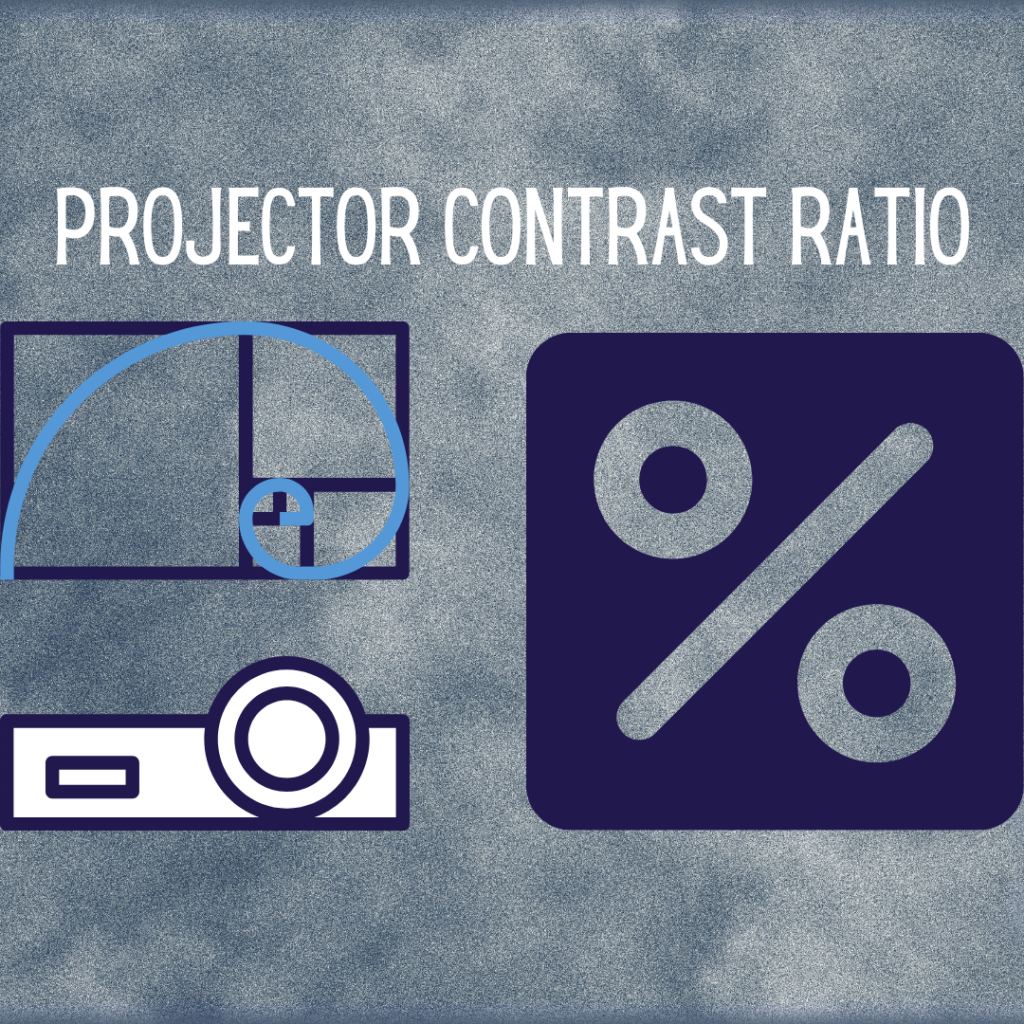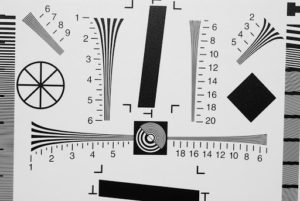What is the Contrast Ratio in Projector?
When dealing with projectors, it’s important to understand the terms used in their technical discussions to get the best out of them.
Let’s talk about the contrast ratio.

What is Projector Contrast Ratio?
The contrast ratio is the ratio of white to black when it comes to images that are being projected.
If a projector has a contrast ratio of 4000:1, this implies that the white image is 4000 times brighter than that of the dark image.
It’s simply the ratio of minimum to maximum brightness. While the white represents brightness, the black represents reduced brightness or darkness.
A higher contrast ratio like 10000:1 ( ratio of white to the black image) will have your pictures and videos clearly displayed on the screen, while a low contrast ratio will give you the exact opposite.
The clarity is not limited to pictures, from texts to tiny graphics and videos, everything on the screen will be crisp clear if you have a higher contrast ratio.
Consequently, It doesn’t matter the quality of your projector or how advanced it is, if its contrast ratio is remarkably low, you’ll end up with a poor blurry image on the screen.
What is a Good Contrast Ratio for a Projector?

A good contrast ratio means optimal clarity. Pictures, text, graphics, videos, you name it. There are no blurry visions coming from your projector when its contrast ratio is high and fantastic.
A good contrast ratio ensures you get the best out of your high-end projector with its 4k resolution or more. Even the most subtle details being projected are revealed brightly when this ratio we are talking about here is high. Most 4k projectors under 2000 have a great contrast ratio and are something to look into as most 1080p projectors have less contrast ratio.
How to Get the Best of Visuals from your Projector with Contrast Ratio.
But before we delve into that, you should know that the contrast ratio of your projector is by default unchangeable. So no matter how you play around with the contrast settings, it won’t change the fact that you have a 3000:1 contrast ratio. Everything will eventually align with its default state at the end of your settings.
Now to the main point.
Ambient Light is a critical factor.
The light present in the environment where the projector is being used plays a major role in determining the clarity of pictures or videos being projected.
If the ambient light around the environment is bright; for instance on a sunny day, you won’t need a projector with a high contrast ratio.
If however, you plan on using it at night or in a dark room, the ratio of white to black should be higher.
This should inform your decision when buying a projector. If you plan on using it indoors for the most part, like a home cinema or a movie theatre, you should aim for higher contrast ratios.
If it’s meant for the great outdoors, lower options will do just fine. Most projectors are very sensitive to light that even the faintest light emanating from a small LED bulb can alter its contrast.
If your projector is as high as 10000:1, you won’t get a clear image under the sun, that’s what it means.
What You Should Do
To get the best of your contrast ratio, ensure all windows and doors are shut. Then put off all the lights, and generally give no room for the entrance of light whether natural or artificial.
Next is the color of the room.
If the room is too bright in color ( painted all-white including the ceiling, doors, and even a white curtain), it’ll affect the quality of the contrast. That’s too much brightness already. Darker rooms farewell with indoor projections. This was a problem for my dorm room projecting set up as the whole room was white so I had to learn how to keep my projector as bright and visible as possible.
Finally, the screen color.
Grey screens are much better at emitting brighter projections than whiter screens. However, a white screen is still better than projecting on walls or any other surfaces.
How to Measure Projector Contrast Ratio.
There are two methods used in the measurement: the Full ON/OFF contrast pattern, and the ANSI Contrast Pattern.
The Full ON/OFF is quite tricky in measurement, more convenient to use by manufacturers, and inflates the results just to make buyers happy. With this kind of measurement, you’ll be getting higher contrast ratios which are most of the time false.
Manufacturers capitalize on this to sway buyers in. It involves 0 IRE and 100 IRE test patterns to rate the whiteness of a given projector.

The ANSI Contrast Pattern gives the more legitimate measurement. It’s quite complicated to manipulate like the ON/OFF pattern which generates sky-high results to impress customers.
Thus, it’s rarely used by manufacturers and marketers, save for the trusted professional brands who have a track record of quality delivery.
Contrary to the 100 IRE white to 0 IRE black pattern of the ON/OFF, the ANSI pattern uses a chessboard pattern involving 16 rectangles, 8 white and 8 black. Now the white rectangles are representing the white images and vice versa. Hence, the brightness of the white rectangles is measured and they are averaged with that of the blacks for a more accurate contrast ratio comparison and a sincere measurement to be done. With the ANSI pattern, contrast ratios of 800:1 or 1000:1 are more common because they are the true results unlike 10000;1 as in the case of ON/OFF.
Finally
While it’s quite hard to find a projector with the right contrast ratio comparison and measurements, there’s something you should know.
Don’t take their word for it.
The manufacturers or the commercial retailers aren’t entirely sincere. So insist on testing it right there. They should have darker indoors, a testing screen, and a personal computer you can use to carry out the test and see for yourself.
But never take their word for it. If it’s a 10000:1 contrast ratio, beautiful! Then see for yourself.
Only go home with a warranty and money-back guarantee if you aren’t satisfied with the quality.
If there’s no such thing, then take the test further by requesting for two projectors to be tested before you so you can make your choice. Simply forget all the verbal contrast ratio comparisons, and ask for a two-projector test.
By the time the second one lights up, you would have to know the better of both if you pay attention closely to the depth or near the three-dimensional quality of both screens.

James has been a tech fanatic for years, from taking apart old electronics and putting them back together to now learning what more technology has to offer. He constantly is learning more regarding the tech industry. As the creator of Internet Bankroll, his mission is to provide unbiased tech information to everyone!
